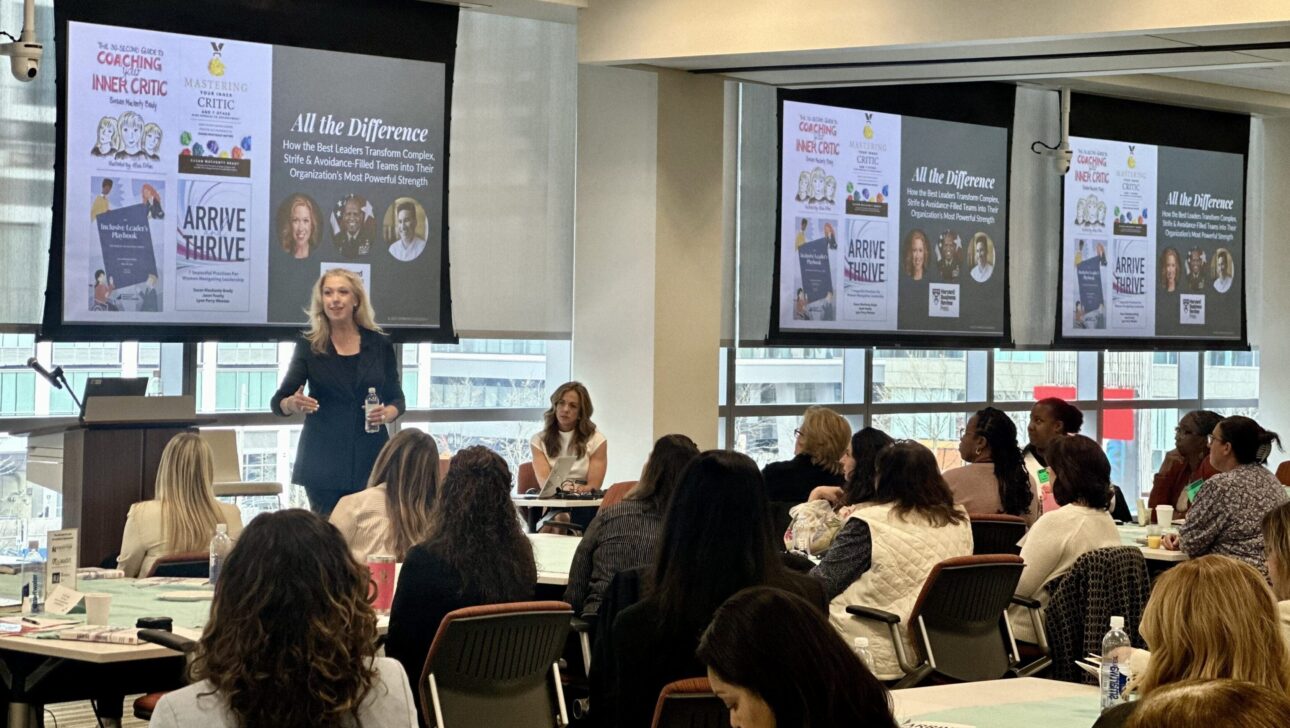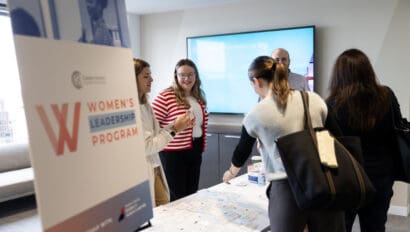Research & Insights
6 Actions That Transform the Way We Lead Across Difference

“How do we include men in this work?”
It was the question I heard again and again. As I traveled the world delivering keynotes inspired by my first two books—The 30-Second Guide to Coaching Your Inner Critic (written at the request of women after early talks on the topic) and Mastering Your Inner Critic and 7 Other Hurdles to Advancement—I had the privilege of engaging with thousands of women leaders. And after nearly every session, that same question inevitably surfaced.
At first, I found the question frustrating. Why was it always women asking how to make space for men, when so few men seemed to be asking how to make space for us?
But then I read Good Guys: How Men Can Be Better Allies for Women in the Workplace by David G. Smith and W. Brad Johnson, and something important was confirmed for me. Not only were there men asking the right questions, but many—like the CEOs and senior executives I’d encountered through my keynotes—were actively working to close the gender gap in leadership.
It wasn’t just the right thing to do. It was a business imperative. These leaders understood that when organizations fail to fully optimize talent, they miss out on performance, innovation, and long-term success. The book gave voice to what I had seen firsthand and offered practical guidance to accelerate that progress. It opened the door to something even bigger.
The Leadership Gap I Couldn’t Ignore
In 2019, I joined Simmons University to launch the Institute for Inclusive Leadership. Our goal was to advance women and help leaders and organizations bring the concept of inclusive leadership to life in practical, measurable ways. Over time, I came to believe the term “inclusive leadership” is, at its core, fundamentally redundant. Leadership is inclusive—or it isn’t leadership at all.
Through designing transformative women’s leadership experiences, signature conferences, and programs that brought tens of thousands together in community, I began to notice a troubling pattern. In the act of convening one identity group at scale, we risked creating a new kind of separateness.
Sometimes we unintentionally reinforce exclusion, even among those who didn’t typically experience it. More and more, men were expressing that they felt left out. I could see this becoming a deeply problematic—and potentially catastrophic—barrier to advancing women and others in a cohesive, sustainable way.
It’s Not Just What You See: The Hidden Dynamics of Leadership
As these concerns came into sharper focus, I co-authored Arrive & Thrive: 7 Impactful Practices for Women Navigating Leadership. That work deepened my focus—not just on how women rise, but on how we lead once we arrive. What does it take to create lasting, positive impact for ourselves and others? That question quickly linked to a larger pattern I was witnessing across all identities and leadership levels: many leaders were simply unprepared to lead across any difference. Not because they didn’t care, but because they lacked a shared playbook for how.
It wasn’t just the seen differences—like race, gender, or ability—that proved challenging. It was the unseen ones, too: working styles, communication preferences, generational dynamics, political views, even introversion misread as disengagement. And with AI and machine learning rapidly reshaping the world of work, the uniquely human ability to build trust, inspire, and collaborate across difference has never been more critical.
A Question That Changed Everything
That’s when I reached out to two trusted colleagues who share my passion for leadership development: Stuart Kliman, a world-renowned expert in building high-performing alliances and a disciple of the Harvard Negotiation Project; and Lieutenant General Leslie Smith (Ret.), the former 66th Inspector General of the U.S. Army and a decorated three-star general known for leading people-first, mission-focused teams at scale.
Together, we formed a question that changed everything: What if we could define and teach the capability every leader needs to unlock human potential and lead effectively across difference? What if we could give leaders not just a set of ideas, but an operating system to practice?
The Cost of Inaction
When navigating difference, we all have ways we instinctively react or get in our own way. We call these The Four Landmines:
- Certainty: Believing you’re right and others are wrong
- Inconsistency: Saying one thing, doing another
- Reactivity: Letting emotions hijack decisions and dynamics
- Justification: Explaining behavior instead of owning it
These landmines often surface in moments of tension, misunderstanding, or change. Left unchecked, they fracture teams, erode trust, and undermine results. But when leaders learn to recognize and rise above them, in themselves and others, they can turn pressure into progress.
The Remedy: Six Target Actions
What we offer isn’t just a model. It’s a co-created leadership operating system. A full-spectrum approach any leader or team member can apply to meet difference with clarity, connection, and accountability.
- Know You – Leverage your best self and help others do the same
- Return to Respect – Regain clarity and choose respect when tension threatens connection
- Generate Honesty – Create safety by being real about what’s hard
- See the Full Story – Expand your understanding through empathy and curiosity
- Ignite Togetherness – Shift from “me” to “we” to solve problems collaboratively
- Commit to Action – Translate insight into impact through follow-through and accountability
This is not about perfection. It is about practice. The leaders who thrive in today’s difference-filled world are those who have learned how to show up, especially when it’s hard.
Introducing All the Difference – A Roadmap for Leadership that Matters
All the Difference: Six Leadership Actions to Bridge Perspectives, Strengthen Teams, and Create Value will be published by Harvard Business Review Press in spring 2026. Together, with insights from 22 remarkable leaders we interviewed across industries and sectors, we’re proud to share a roadmap for human-centered, performance-driven leadership that works.
Together, we believe that leadership doesn’t just shape performance. It shapes possibility. And when leaders master the skills to navigate difference well, they make all the difference. That is when engagement deepens, performance accelerates, and lasting value is created.




